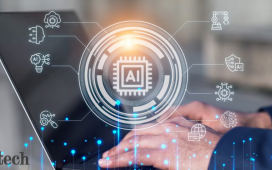I think we should be worried, but not about AGI. Depending on whose definition you take, we have had AGI since the 1960s, in that computers do many tasks better than humans do. But if we’re talking about some kind of superhuman capabilities covering almost every task human beings could do, I think we don’t need to be worried about computers taking over the world and doing something against our will. That kind of science fiction view of super intelligence is not what these systems are capable of and will not happen. I think it is often used by the industry as a distraction from what we should really be worried about.
Real harms
I would call this 3Ds or maybe 4Ds.
Disinformation, deepfake, and discrimination and bias. Last one, which may or may not happen, is what I would call displacement of jobs. We have not seen a lot of it yet. But we need to take this with a grain of salt because some of these tools can help people be more effective, and remove parts of the job they don’t like so they can be better.
Discover the stories of your interest

Are these problems unfixable?I suspect these models will always have some reflection of the data that they’re trained on. Some of these issues you can’t fix, or if you fix them, you end up with side effects that you don’t want. We’ve seen that in some of our own research. If you post your profile, I’m a gay male or I am a Nazi, and I need this health support. Depending on the profile that you use and because of those guardrails that they’ve tried to build in, it then creates nonsensical output that you might not want. So, we talk about this as delusional empathy, where they were empathetic to those who said they were a Nazi, but then not empathetic for somebody who said they were a Muslim or a gay male. Because the system is trying not to say offensive things to certain personalities, but not others, causing them to give performance that you would think is wrong. So companies are trying to work on these. It is a hard problem to get right. So they may have gotten better over time. I don’t have definitive research to prove that it’s my system.
Data black box
Researchers, who are outside of these firms have a hard time being able to tell what’s going on and why. Because we don’t actually know what data is in there. These firms don’t have to tell us what data they trained. I think that’s a big problem. If there is going to be any regulation of these systems, a basic level of transparency would be required.
An alternative
One way around this is if academia can have the resources to build some of these large models themselves in a more open-source way, where we only show what the data is, and understand why certain effects were happening. The problem we have right now is these systems only exhibit the important behaviours at scale. In academia, we can’t even do it. GPT 3.5 was trained on probably thousands of GPUs. In the top academic institutions, the highest number of GPUs, you’ll see is somewhere in the 800 to 1000 processors. This gap is a problem for research. I think governments are going to be the only ones who can solve this and make sure that the nonprofit sector, like academia, can actually contribute in this area and understand what’s going on. Because the companies have incentive to keep it close now, as now it’s a very competitive business.
How will GenAI play out in India, other countries?
You have to watch out for how this technology is being sold. A lot of technologies like this are said to democratise healthcare or education. And the fact is, technologies tend not to do that. They tend to go to the rich and highly educated first. Unless we are actually explicit, and actually work on those problems, it won’t happen by itself. The real warning I have is if we really want it to be equaliser, to be level, to be fair, we actually have to attack those explicitly.
Lot of positives, but…
I think this technology is going to change our lives in very positive ways. But it will only do that without a lot of negatives, if we design for it, think about it, and regulate it. So, we have to do it with our eyes wide open and cognizant of how we want it to be.











